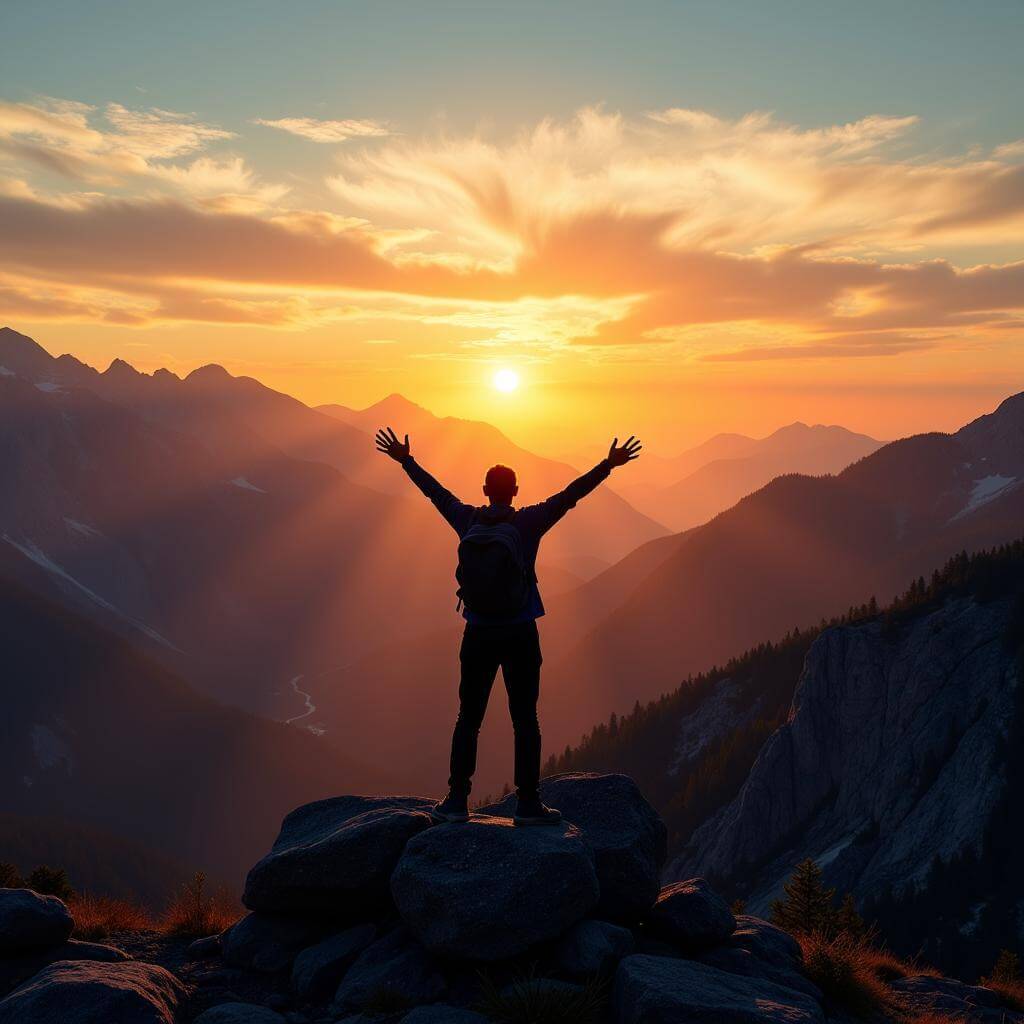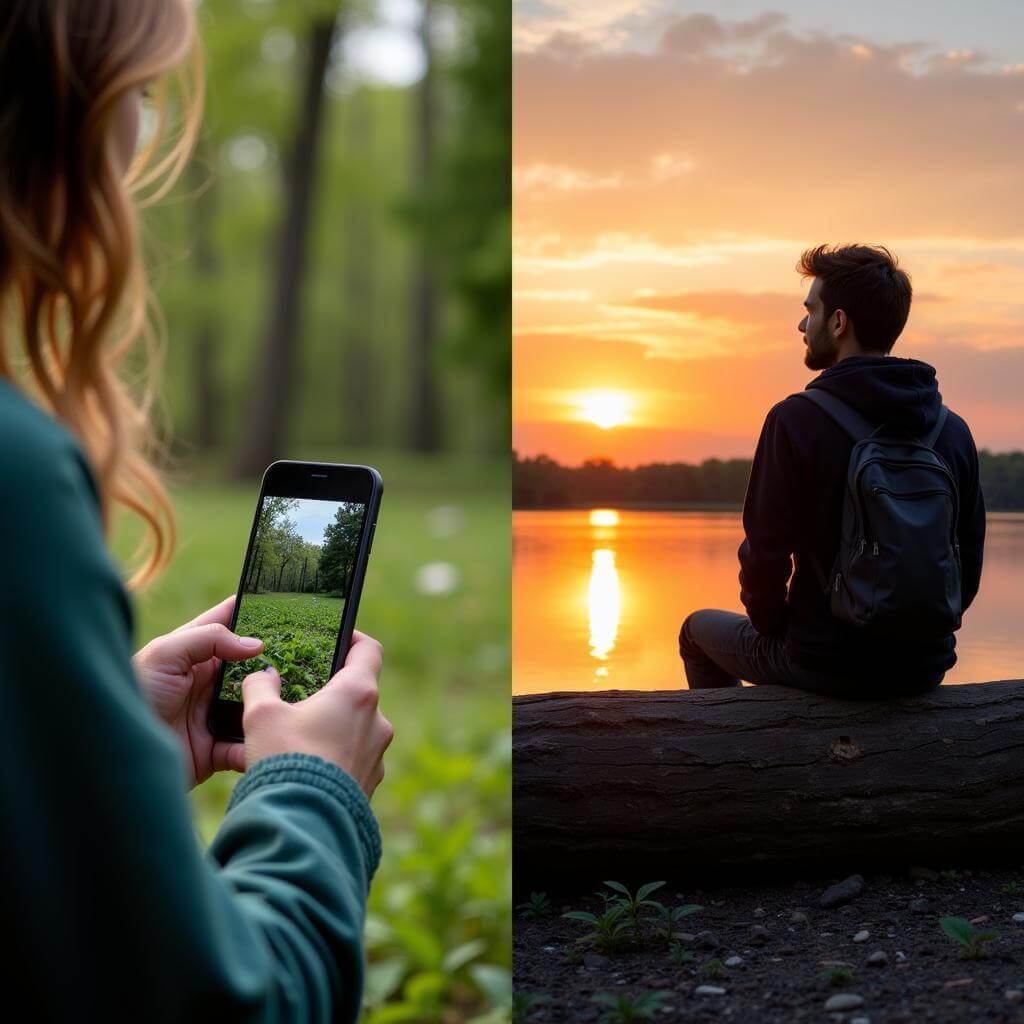The topic of describing a memorable hike or trek is a popular one in IELTS Speaking tests, particularly in Part 2. This subject allows candidates to showcase their vocabulary, fluency, and ability to narrate personal experiences. Understanding how to approach this topic effectively can significantly boost your chances of achieving a high score in the Speaking section.
Table Of Contents
Describe a memorable outdoor adventure is a closely related topic that often appears in IELTS Speaking tests. By preparing for both, you’ll be well-equipped to handle a variety of questions about outdoor experiences.
Part 1: Introduction and Interview
In Part 1, the examiner may ask general questions about hiking or outdoor activities. Here are some common questions and sample answers:
-
Do you enjoy hiking?
Band 6-7 Answer: “Yes, I quite enjoy hiking. It’s a great way to get some exercise and enjoy nature. I try to go hiking at least once a month when the weather is nice.”
Band 8-9 Answer: “Absolutely! I’m an avid hiker and find it to be an exhilarating experience. There’s something profoundly rewarding about challenging yourself physically while immersing yourself in nature’s beauty. I make it a point to go on hikes regularly, at least twice a month, regardless of the weather conditions.”
-
What do you usually take with you when you go hiking?
Band 6-7 Answer: “I usually take water, some snacks, a first-aid kit, and a map. I also make sure to wear comfortable shoes and bring a jacket in case it gets cold.”
Band 8-9 Answer: “I always ensure I’m well-equipped for my hikes. My essentials include a hydration pack, energy-dense snacks, a comprehensive first-aid kit, and a detailed topographic map. I also carry a multi-tool, emergency blanket, and a fully charged mobile phone. Of course, I wear moisture-wicking clothing and sturdy hiking boots to ensure comfort throughout the trek.”
Part 2: Long Turn (Cue Card)
Here’s a sample cue card related to the topic:
Describe a memorable hike or trek you have been on.
You should say:
- Where it was
- Who you went with
- What you saw during the hike
- And explain why it was memorable for you
 A hiker enjoying a breathtaking mountain sunrise view
A hiker enjoying a breathtaking mountain sunrise view
Band 6-7 Answer:
“I’d like to talk about a memorable hike I went on last summer. It was in the Rocky Mountains in Colorado, USA. I went with a group of friends from college. We decided to do this hike as a reunion trip.
During the hike, we saw some amazing scenery. There were tall pine trees, clear mountain streams, and even some wildlife like deer and eagles. The views from the top of the mountain were breathtaking. We could see for miles in every direction.
This hike was memorable for me because it was quite challenging. It was the longest and highest hike I’d ever done. Reaching the summit felt like a real achievement. Also, spending time with old friends in such a beautiful place made it special. We had great conversations and laughed a lot along the way.
The experience reminded me how much I enjoy being in nature and pushing my limits. It inspired me to go on more hikes and explore more of the outdoors.”
Band 8-9 Answer:
“I’d be delighted to describe a truly unforgettable trek I embarked on last autumn. The journey took place in the majestic Annapurna region of Nepal, specifically the Annapurna Base Camp trek.
I undertook this arduous expedition with a close friend who shares my passion for high-altitude adventures. We were accompanied by a knowledgeable local guide who provided invaluable insights into the region’s culture and geography.
The visual feast that unfolded before us throughout the trek was nothing short of awe-inspiring. We traversed through lush rhododendron forests, picturesque terraced fields, and quaint mountain villages. As we ascended, the landscape transformed dramatically, revealing towering snow-capped peaks, glacial moraines, and the ethereal beauty of the Annapurna Sanctuary.
This trek stands out in my memory for several compelling reasons. Firstly, the physical and mental challenge it presented was unparalleled. Trekking at high altitudes, dealing with rapidly changing weather conditions, and pushing through fatigue tested our resilience and determination.
Secondly, the cultural immersion was profound. Interacting with the warm and hospitable Nepali people, staying in traditional teahouses, and witnessing ancient Buddhist and Hindu practices left an indelible impression on me.
Lastly, reaching the Annapurna Base Camp and being surrounded by a 360-degree panorama of some of the world’s highest peaks was a moment of pure, transcendent wonder. It gave me a newfound appreciation for the raw power and beauty of nature, and reinforced my commitment to environmental conservation.
This trek wasn’t just a physical journey, but a transformative experience that broadened my perspectives and deepened my connection with the natural world.”
Follow-up questions:
-
How did you prepare for this hike?
Band 6-7 Answer: “I did some research online about the trail and the weather conditions. I also bought some new hiking shoes and practiced on shorter hikes near my home to build up my stamina.”
Band 8-9 Answer: “My preparation was quite comprehensive. I devised a rigorous training regimen that included cardiovascular exercises, strength training, and practice hikes with a weighted backpack. I also meticulously researched the trek, studying topographic maps, reading accounts from other trekkers, and consulting with experienced hikers. Additionally, I invested in high-quality gear suited for the specific conditions we’d encounter, and familiarized myself with basic wilderness first aid.”
-
Do you think hiking is becoming more popular? Why/Why not?
Band 6-7 Answer: “Yes, I think hiking is becoming more popular. People are more interested in fitness and outdoor activities these days. Also, social media makes it easy to share beautiful photos from hikes, which inspires others to try it.”
Band 8-9 Answer: “Indeed, hiking has seen a significant surge in popularity in recent years. This trend can be attributed to several factors. Firstly, there’s a growing societal emphasis on health and wellness, with many people seeking natural, low-cost ways to improve their physical and mental well-being. Hiking perfectly fits this bill.
Secondly, the ubiquity of social media has played a crucial role. Platforms like Instagram have made it easier than ever to share stunning landscape photography, inspiring wanderlust and encouraging people to seek out these experiences for themselves.
Moreover, in our increasingly urbanized and digitally-dominated world, there’s a growing desire to reconnect with nature. Hiking offers a perfect antidote to the stresses of modern life, providing a way to unplug and recharge in natural settings.
Lastly, the eco-tourism movement has gained traction, with more people seeking sustainable travel options. Hiking, as a low-impact activity that often supports local economies, aligns well with these values.
However, this increased popularity also brings challenges, such as trail erosion and overcrowding in popular areas, highlighting the need for responsible hiking practices and conservation efforts.”
Part 3: Two-way Discussion
- What are some of the environmental impacts of increased hiking and tourism in natural areas?
Band 6-7 Answer: “Increased hiking and tourism can have some negative impacts on the environment. It can lead to more litter on trails, damage to plants, and disturbance of wildlife. Popular hiking spots might become overcrowded, which can cause erosion on the trails. Also, if people aren’t careful, they might accidentally start forest fires.”
Band 8-9 Answer: “The environmental repercussions of increased hiking and tourism in natural areas are multifaceted and can be quite significant if not properly managed. One of the most immediate impacts is trail degradation. Heavy foot traffic can lead to soil compaction and erosion, which not only damages the trail itself but can also affect surrounding vegetation and wildlife habitats.
Ecosystem disruption is another crucial concern. Increased human presence can disturb wildlife patterns, potentially affecting breeding, feeding, and migration behaviors. This is particularly problematic for sensitive or endangered species.
Waste management becomes a more pressing issue with higher visitor numbers. Even with ‘Leave No Trace’ principles, there’s often an increase in litter, which can harm wildlife and degrade the aesthetic value of natural areas.
Habitat fragmentation can occur as new trails and facilities are developed to accommodate growing numbers of hikers. This can lead to the loss of biodiversity and disrupt ecological balance.
Moreover, there’s the risk of introducing invasive species. Hikers can inadvertently transport seeds or small organisms on their clothes or equipment, potentially introducing non-native species that could threaten local ecosystems.
Lastly, increased tourism often leads to greater carbon emissions from transportation to these natural areas, contributing to broader environmental issues like climate change.
It’s crucial to implement sustainable tourism practices, including visitor education, trail maintenance, and carrying capacity limits, to mitigate these impacts and preserve these natural areas for future generations.”
- How can governments balance the economic benefits of tourism with environmental protection in popular hiking areas?
Band 6-7 Answer: “Governments can try to find a balance by setting rules for tourists and tour operators. They can limit the number of people allowed in certain areas, charge entrance fees to pay for conservation, and create designated camping areas to prevent damage to the environment. They should also educate visitors about how to behave responsibly in nature.”
Band 8-9 Answer: “Balancing the economic benefits of tourism with environmental protection in popular hiking areas requires a nuanced and multi-faceted approach from governments.
Firstly, implementing a robust regulatory framework is crucial. This could include setting visitor capacity limits based on scientific studies of the area’s ecological carrying capacity. Zoning regulations can help distribute visitor impact and protect sensitive areas.
Economically, governments can introduce well-structured fee systems. This might involve tiered pricing, where peak season or high-impact activities carry a premium. These fees should be transparently allocated towards conservation efforts, creating a direct link between tourism and environmental protection.
Investing in sustainable infrastructure is another key strategy. This could include developing eco-friendly accommodation, renewable energy sources, and efficient waste management systems. Such investments not only mitigate environmental impact but can also create new job opportunities for local communities.
Public-private partnerships can be leveraged to develop innovative solutions. For instance, collaborating with tech companies to create virtual tourism experiences can help reduce physical visitor numbers while still providing economic benefits.
Education plays a vital role. Governments should focus on raising awareness among both tourists and local communities about the importance of conservation. This can be done through interpretive centers, guided tours, and community engagement programs.
Implementing a certification system for tour operators and accommodations can encourage businesses to adopt sustainable practices. This not only helps protect the environment but can also be marketed as a unique selling point for eco-conscious travelers.
Lastly, governments should prioritize long-term monitoring and adaptive management. Regular assessments of environmental indicators and tourism impacts can inform policy adjustments, ensuring a dynamic balance between economic growth and conservation.
By adopting such a holistic approach, governments can work towards achieving a symbiotic relationship between tourism and environmental protection, ensuring the longevity of both the natural assets and the economic benefits they provide.”
Describe a memorable experience in a forest is another topic that often comes up in IELTS Speaking tests. The strategies and vocabulary used for describing a hike can be easily adapted to discuss forest experiences as well.
Key Vocabulary and Phrases for High Scores
-
Arduous /ˈɑːrdjuəs/ (adjective): Involving or requiring strenuous effort; difficult and tiring.
Example: “The arduous climb to the summit tested our physical limits.” -
Panoramic /ˌpænəˈræmɪk/ (adjective): (of a view) Unobstructed and wide-ranging.
Example: “The panoramic vista from the mountaintop was absolutely breathtaking.” -
Expedition /ˌekspəˈdɪʃən/ (noun): A journey undertaken by a group of people with a particular purpose, especially that of exploration.
Example: “Our hiking expedition to the remote wilderness was meticulously planned.” -
Traverse /trəˈvɜːrs/ (verb): To travel across or through.
Example: “We had to traverse a narrow ridge to reach the next valley.” -
Pristine /ˈprɪstiːn/ (adjective): In its original condition; unspoilt.
Example: “The pristine alpine meadows were carpeted with wildflowers.” -
Exhilarating /ɪɡˈzɪləreɪtɪŋ/ (adjective): Making one feel very happy, animated, or elated.
Example: “The exhilarating rush of reaching the summit was indescribable.” -
Biodiversity /ˌbaɪəʊdaɪˈvɜːsəti/ (noun): The variety of plant and animal life in a particular habitat.
Example: “The rich biodiversity of the rainforest amazed us at every turn.”
Describe a memorable walk in a natural area is another related topic where these vocabulary items and phrases can be effectively used.
Examiner’s Advice
To achieve a high score in the IELTS Speaking test when describing a memorable hike or trek:
-
Use a wide range of vocabulary, including less common words and idiomatic expressions related to nature and outdoor activities.
-
Vary your sentence structures, using a mix of simple and complex sentences.
-
Speak fluently and coherently, organizing your ideas logically.
-
Include specific details and personal reflections to make your description vivid and engaging.
-
Practice describing different aspects of hikes or treks, such as the terrain, weather conditions, physical challenges, and emotional experiences.
-
Be prepared to discuss broader topics related to hiking, such as environmental conservation or the benefits of outdoor activities.
-
Work on your pronunciation and intonation to ensure clarity in your speech.
Remember, regular practice and exposure to English language content about hiking and outdoor activities can significantly improve your performance on this topic.
Describe a memorable hike or nature walk you had and describe a recent holiday that you enjoyed are additional topics where you can apply these speaking strategies and vocabulary. By preparing for a range of related subjects, you’ll be well-equipped to handle various questions in the IELTS Speaking test.



